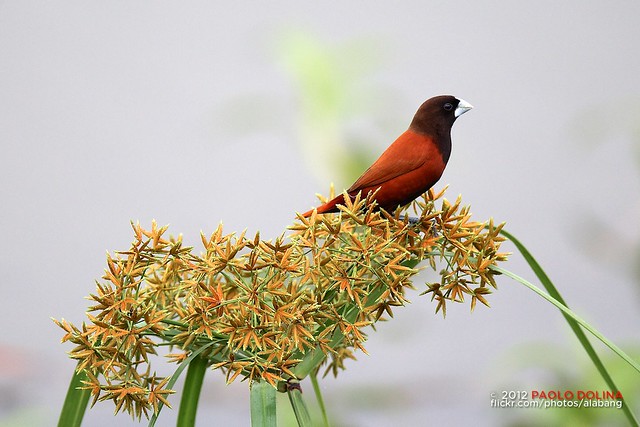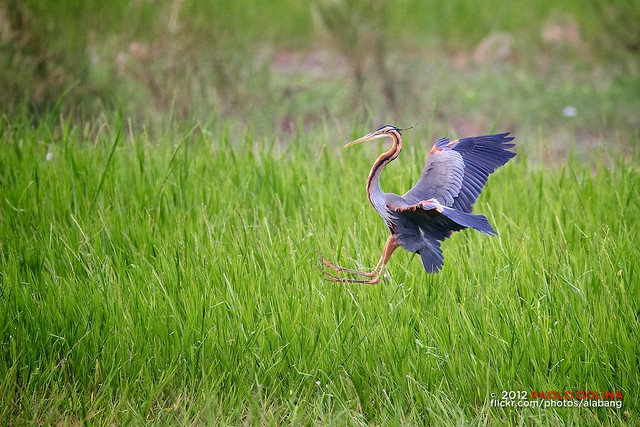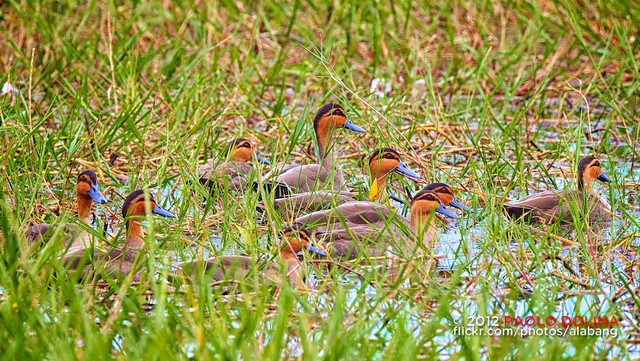White-collared Kingfisher @ University of San Carlos - Talamban Campus 02/01/13

Results 661 to 670 of 1262
Thread: Bird photography
-
02-07-2013, 03:44 PM #661
-
02-12-2013, 10:39 PM #662

Chestnut Munia, (Lonchura atricapilla) by alabang, on Flickr
The Chestnut Munia, (Lonchura atricapilla) (formerly considered as a subspecies of the Tricoloured Munia Lonchura malacca atricapilla) also known as Black-headed Munia, is a small passerine bird. This estrildid finch is a resident breeding bird in Bangladesh, Brunei, Cambodia, China, India, Indonesia, Laos, Malaysia, Burma, Nepal, Philippines, Singapore, Taiwan, Thailand, Vietnam and Hawaii. Known as mayang pula ("red maya", to distinguish it from the predominantly brownish Tree Sparrow which is also called maya) in the Philippines, perhaps because of its brick red patch on the lower back that shows only when it flies. The Black-headed Munia is the former national bird of the Philippines (the Philippine national bird is now the Philippine eagle).
Source: Chestnut Munia - Wikipedia, the free encyclopedia
Settings: 1/640 ƒ/5.6 ISO640 800mm
Taken at Candaba, Philippines
-
02-14-2013, 01:27 PM #663

Purple Heron (Ardea purpurea) by alabang, on Flickr
The Purple Heron (Ardea purpurea) is breeds in colonies in reed beds or trees close to large lakes or other extensive wetlands. It builds a bulky stick nest.
It feeds in shallow water, spearing fish, frogs, insects and small mammals. It will often wait motionless for prey, or slowly stalk its victim. It tends to keep within reedbeds more than the Grey Heron, and is often inconspicuous, despite its size.
It has a slow flight, with its neck retracted. This is characteristic of herons and bitterns, and distinguishes them from storks, cranes and spoonbills, which extend their necks. The long neck of Purple Heron looks particularly snake-like, with more of an S-shape in flight. The call is a loud croaking "krek".
The Purple Heron is one of the species to which the Agreement on the Conservation of African-Eurasian Migratory Waterbirds (AEWA) applies.
Source: Purple Heron - Wikipedia, the free encyclopedia
Settings: 1/2000 ƒ/5.6 ISO2500 800mm
Taken at Candaba, Philippines
-
02-25-2013, 09:12 PM #664Senior Member

- Join Date
- Dec 2005
- Gender

- Posts
- 594

The Whiskered Tern (Chlidonias hybrida) is a seabird of the tern family Sternidae. This bird has a number of geographical races, differing mainly in size and minor plumage details. This species breeds in colonies on inland marshes, sometimes amongst Black-headed Gulls, which provide some protection. The scientific name arises from the fact that this, the largest marsh tern, show similarities in appearance to both the white Sterna terns and to Black Tern.
This was shot at one of our birding sites in Negros. Join IBiS Basic Birding Treks in Negros, Bohol, Puerto Princesa and Coron and get to shoot the best of Philippine wildlife. Hike, camp out, set out in an adventure and live a dream.
-
02-25-2013, 09:32 PM #665
-
03-01-2013, 02:22 PM #666
The Spotted Dove @ Villa Dolina, Marasbaras Tacloban City

-
03-01-2013, 02:26 PM #667
Barred Rail a.k.a. "Tikling" @ Calanggaman Island, Palompon Leyte

-
03-04-2013, 09:39 PM #668
-
03-04-2013, 11:27 PM #669
-
03-05-2013, 03:00 AM #670

Philippine Duck (Anas luzonica) by alabang, on Flickr
Anas luzonica is endemic to the Philippines, being recorded from all the major islands and eight smaller islands. Records since 1980 derive from c.30 localities, most on Luzon and Mindanao. Records from Siquijor and the Sulus remain unsubstantiated. A steep population decline was evident by the mid-1970s, with high numbers recorded at only a few sites in the following decade, e.g. Candaba Marsh (Luzon) which probably supported many thousands in the early 1980s. Subsequent local extinctions and near-disappearances have occurred in several significant sites, including Candaba Marsh and Buguey wetlands (where several thousand were recorded in 1983). Important current areas include Polillo Island (240 seen and an estimated 3,000 present in 1996), Subic Bay (600 seen in 1997), Magat dam (2,000 were seen in 2001) and Malasi lakes (1,320 were recorded in 2002), Luzon. Other recent records come from Mangatarem, Pangasinan (east of Zambales Mountains IBA) where 70 individuals were counted on the Barabac River inside the Manleluag Spring National Park, Cantilan mangroves in Surigao del Sur and from a mangrove fishpond in Bicol Region, Southern Luzon (B. Tabaranza in litt. 2007). In 1993, its population was estimated at 10,000-100,000, but by 2002 fewer than 10,000 birds were thought to remain.
Source: Philippine Duck (Anas*luzonica) - BirdLife species factsheet
Settings: 1/160 ƒ/8 ISO320 800mm
These uncaptive birds were recorded in the Philippines
Advertisement
Similar Threads |
|




 Reply With Quote
Reply With Quote



